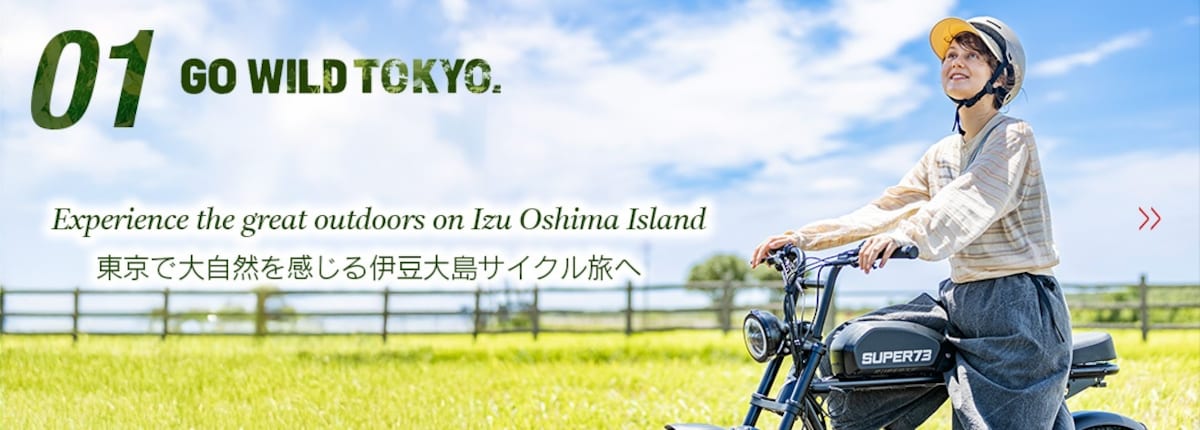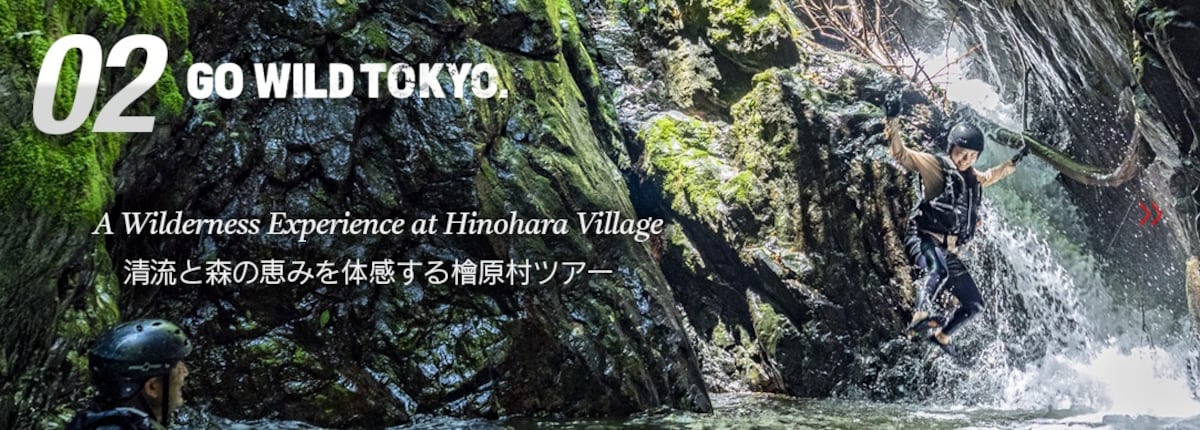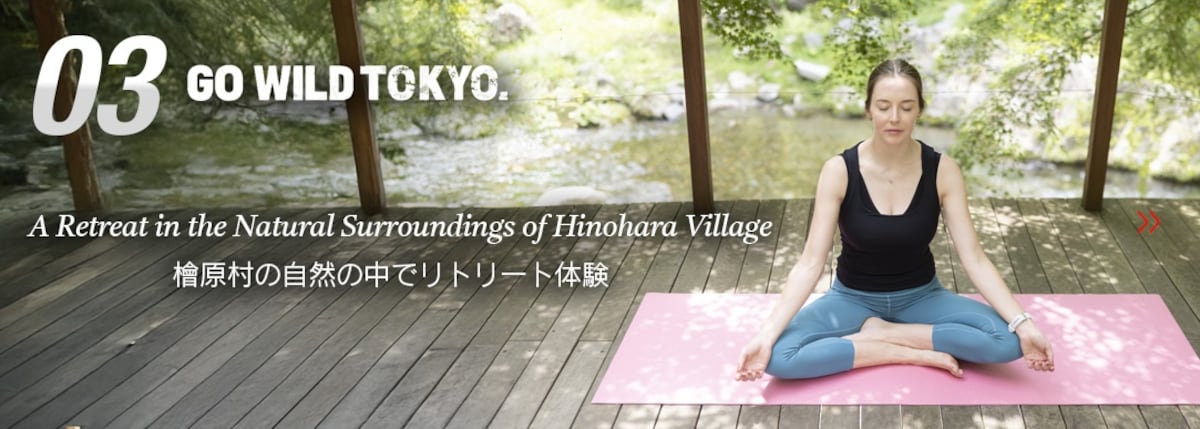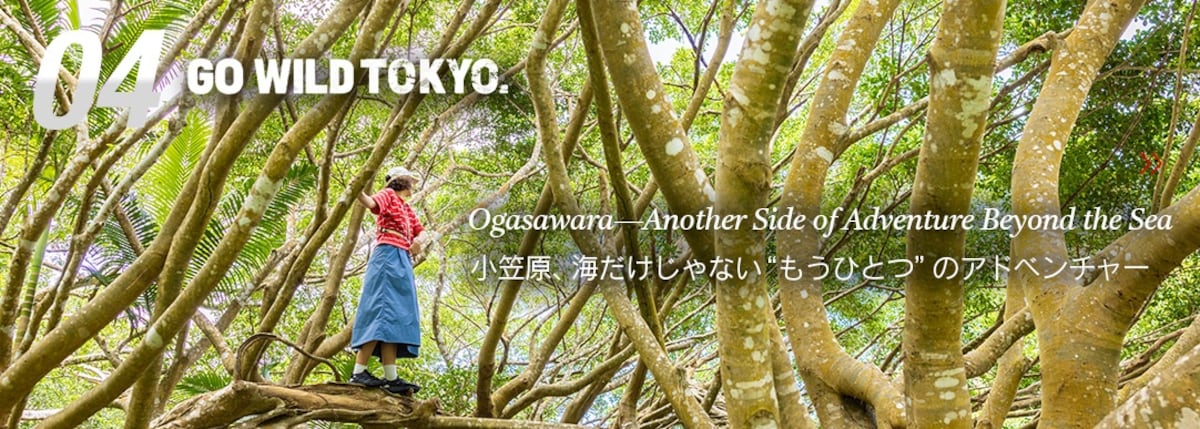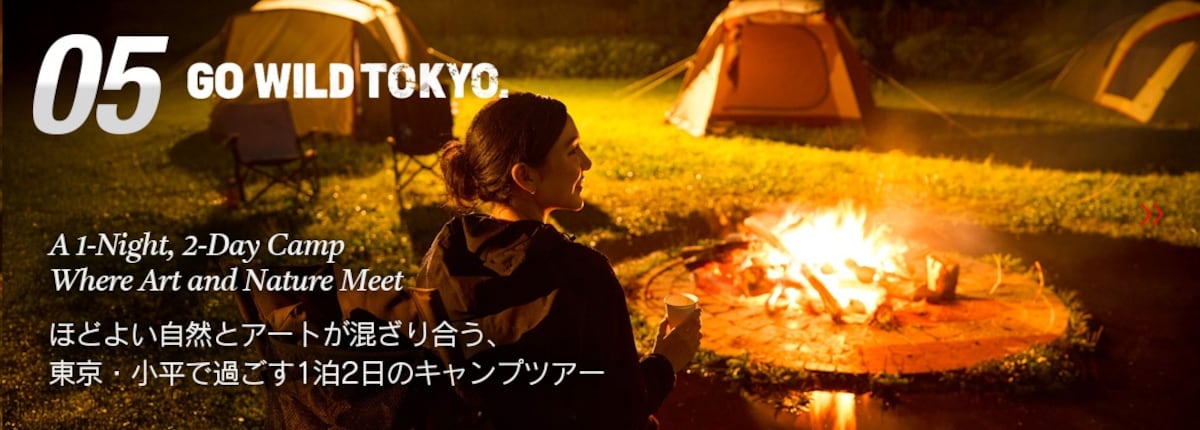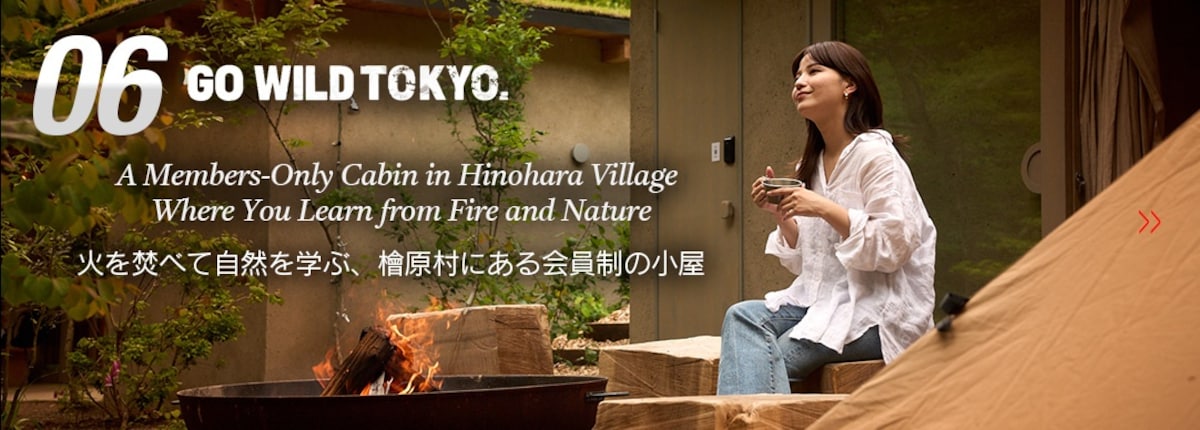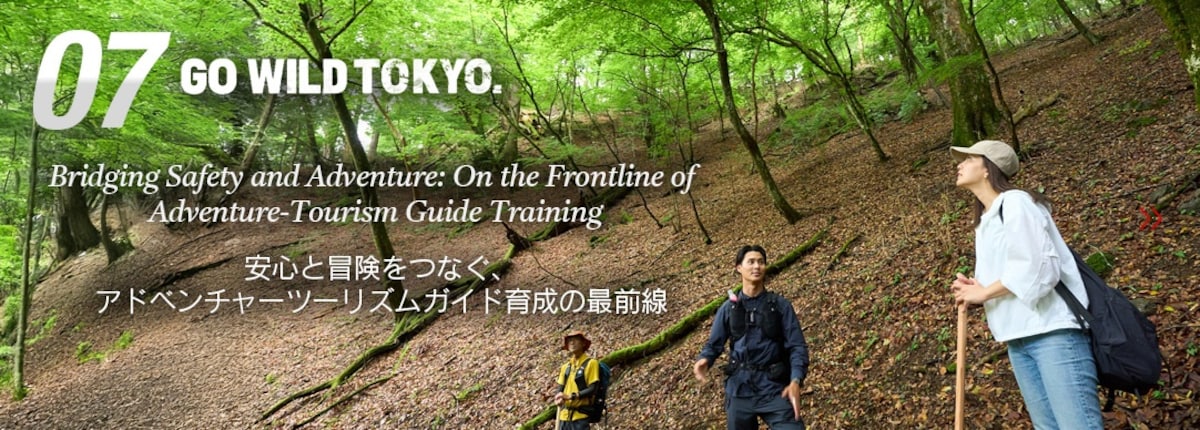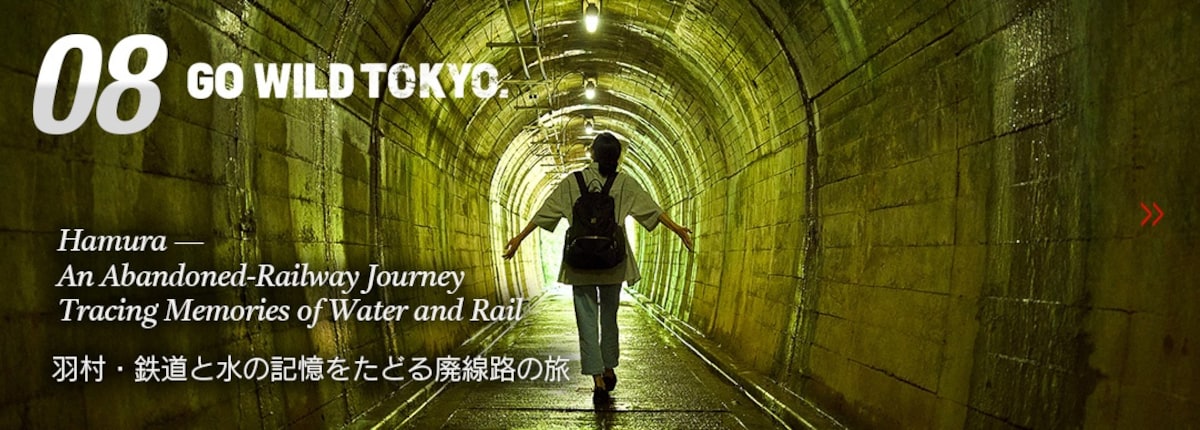GO WILD TOKYO 6 / A Members-Only Cabin in Hinohara Village Where You Learn from Fire and Nature
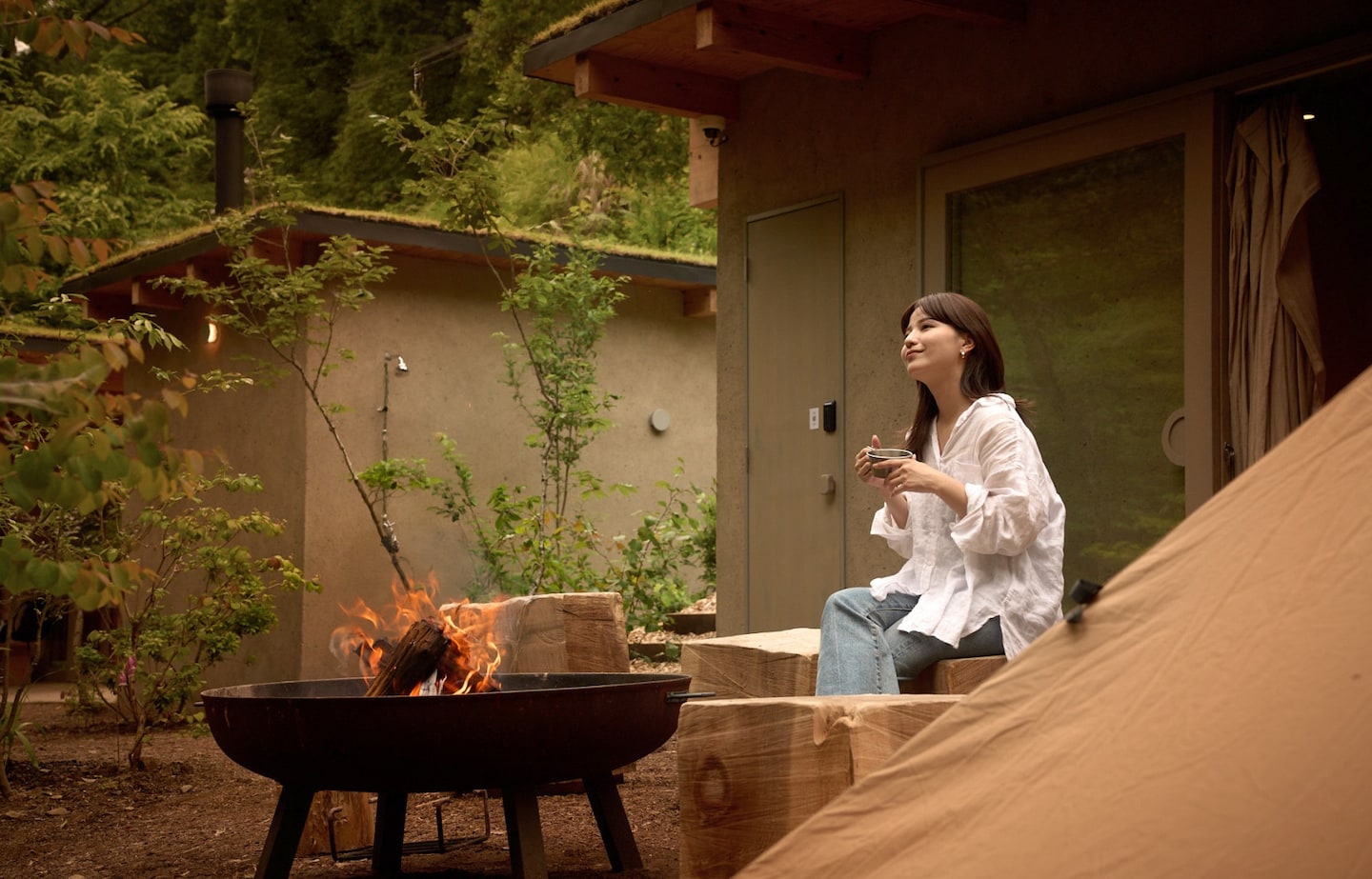
When people think of Tokyo, many picture skyscrapers and buzzing streets—but did you know the metropolis is also home to remarkable nature? Venture a little beyond the city center into the Tama and island areas and you’ll find landscapes that feel worlds away—perfect places to step out of the urban rush and reset. A style of travel increasingly popular with visitors is “adventure tourism,” built on at least two of three elements: nature, activities, and cultural experiences. Why not leave the everyday behind and set out to discover something new? GO WILD TOKYO!
By AAJ Editorial TeamHinohara Village lies at Tokyo’s western edge, with forests covering roughly 90 percent of its land. Despite being only about 90 minutes by car from central Tokyo, the area boasts an untouched natural environment ideal for trekking, river play, and fishing. It’s the only municipality in Tokyo (excluding the island areas) officially designated as a “village,” where traditional mountain hamlet scenery and culture still endure. Once sustained by forestry and mountain worship, the community today is welcoming new hubs—cafés, saunas, accommodations—and bringing in fresh sensibilities. It’s an area to watch for it blend of history and new ideas.
In March 2025, HINOKO SHELTER, a members-only outdoor lodging facility, opened here with the concept “Stoke the Fire, Receive Nature’s Gifts.” Centered around three fires—a campfire, a wood-burning sauna, and a hearth—it’s a place to be immersed in the natural surroundings, sharpen the senses, and spend time with flame. We were granted special access for a firsthand stay.

A Cabin Shaped for “Feeding the Fire” Blends into the Land
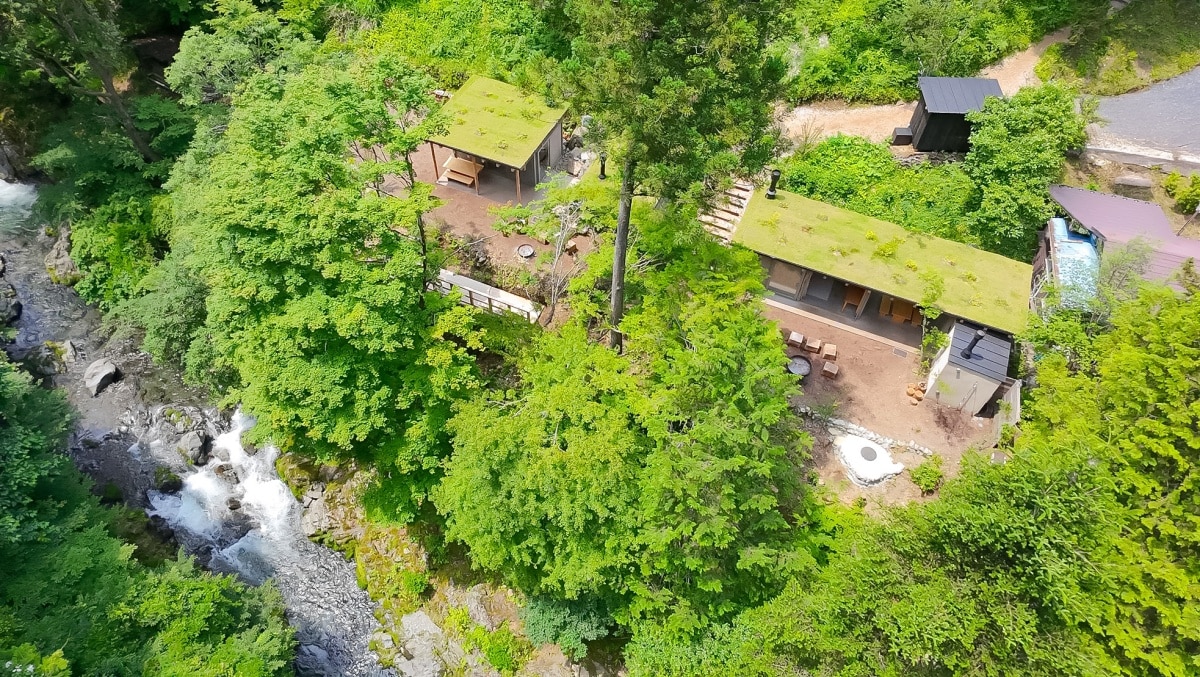
An exceptional perch overlooking the Minami Akigawa River.
Opened in March 2025, the members-only HINOKO SHELTER facility sits beside the clear Minami Akigawa. It seems as if it has grown straight out of the earth, beautifully harmonizing with the surrounding landscape. “The site has a distinctive rock outcrop, so we aimed for architecture that resonates with that strength,” says Momoko Masuda of TRAIL HEADS,Inc., the company that operates Hinoko Shelter.
TRAIL HEADS specializes in producing offices and commercial spaces, with projects that span “work, living, and play,” and has previously operated a members-only campground in Hinohara. With HINOKO SHELTER, they distilled the idea of coexisting with nature into the smallest unit of architecture—a cabin.
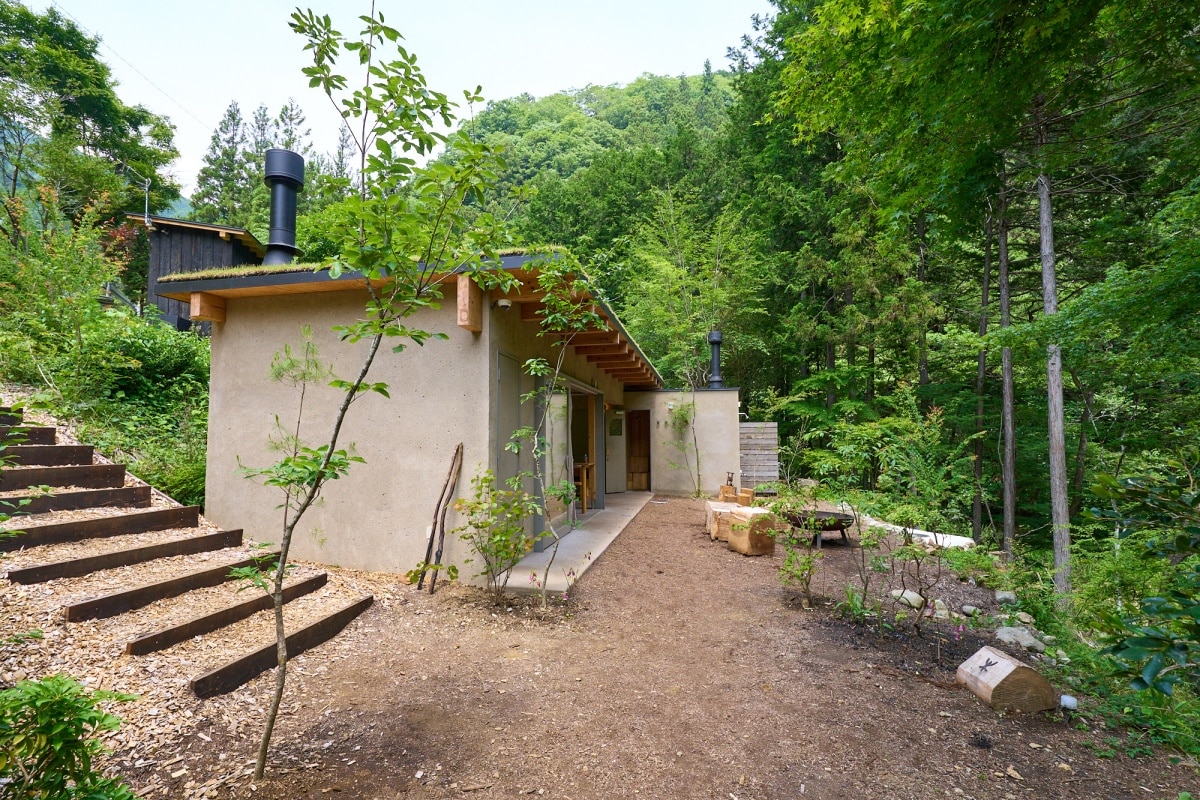
Descend a flight of stairs from the road and the cabin appears: modern and refined.
The posts and beams use timber from the village, while the walls are finished with plaster mixed with local soil. The team drew inspiration from buildings seen in Northern Europe. “In Finland’s national parks, free public shelters left a strong impression—people spending time as they wished,” says Masuda. “Another reference was Iceland’s old stone buildings with moss and straw roofs that felt like part of the landscape. We wanted HINOKO SHELTER to be that kind of ‘cabin that becomes one with nature.’”
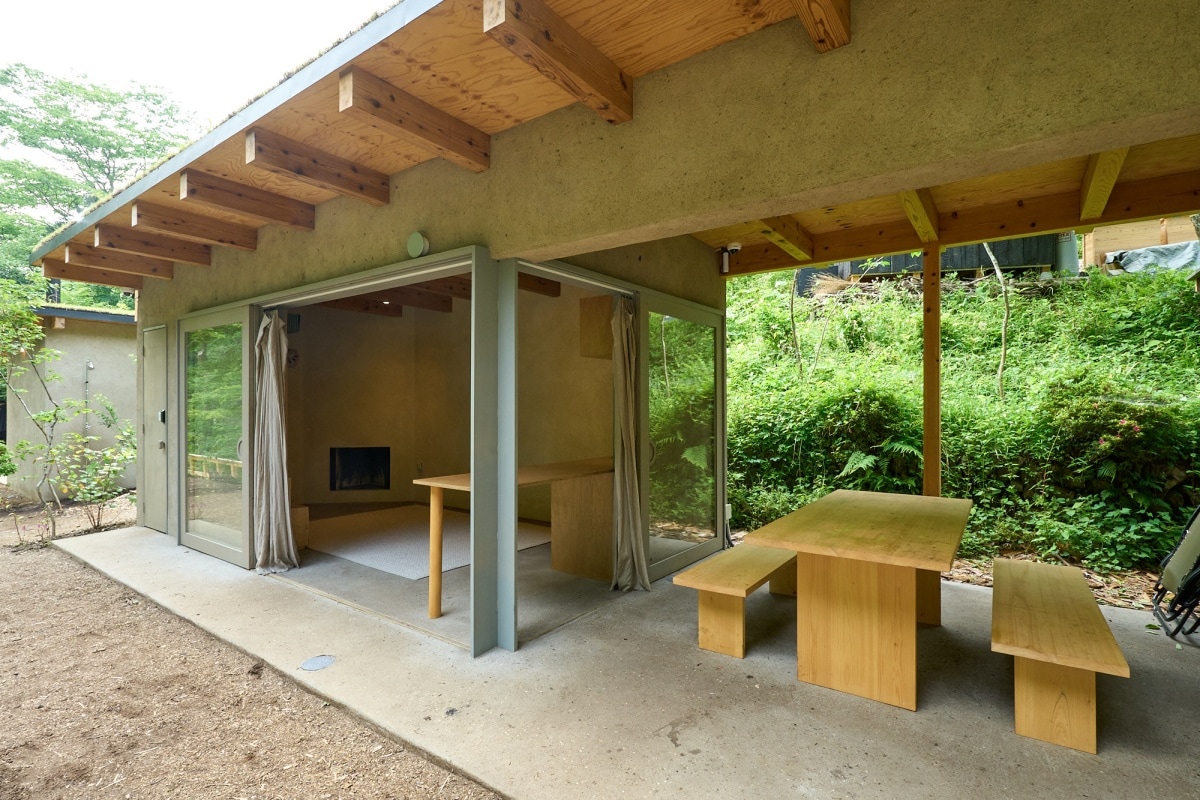
Open and living areas share a level, seamless plane, blurring indoors and out.
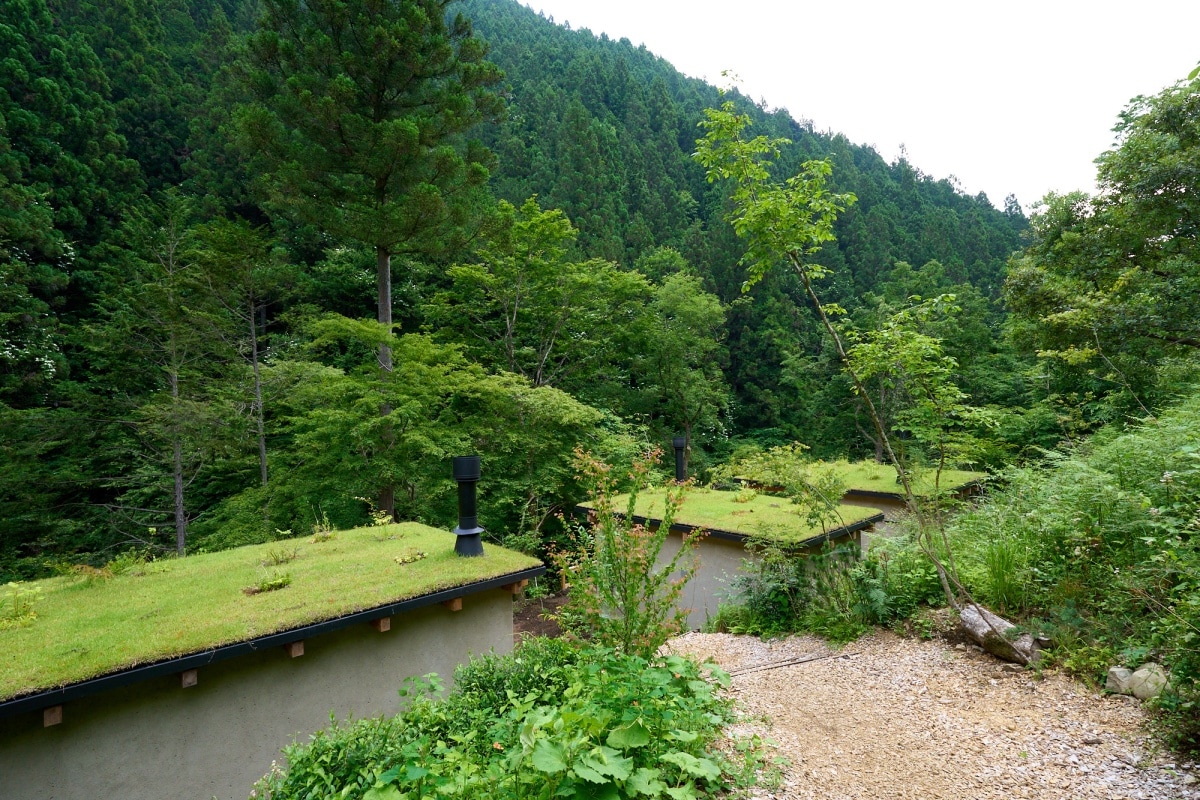
Parts of the green roof were intentionally left bare to plant native species from Hinohara, enhancing harmony with the surroundings.
The grounds are divided into two sites, Iwasuna and Kitone, each reserved for a single group per day. Sited to blend into the environment, each area is equipped with clean, comfortable sleeping quarters, dining, a sauna, and sanitary facilities. The open space features a large fire pit and dedicated wood-splitting gear—everything you need to make and spend time with fire.
“As a members-only facility, we give on-site instruction about how to use the space and what we value,” says Masuda. “Guests do everything themselves—from splitting wood and lighting fires to cleaning up afterward.”
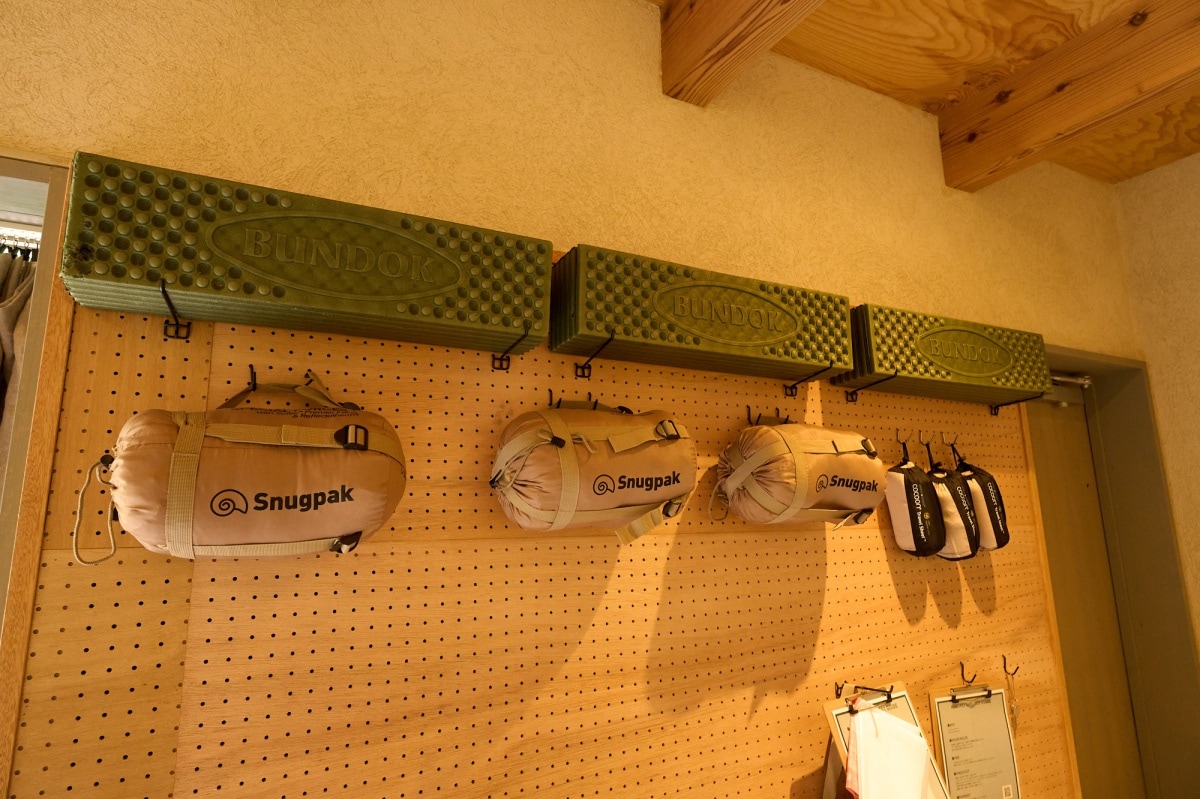
Sleeping bags and mats are available to rent.
From the cabin, stone steps lead down to a secluded riverside. Visitors are encouraged to cool off in the river after the sauna or enjoy playing in the water in summer. Fishing is another draw. “These valleys are so steep that anglers rarely come here—it’s a hidden spot,” Masuda says.
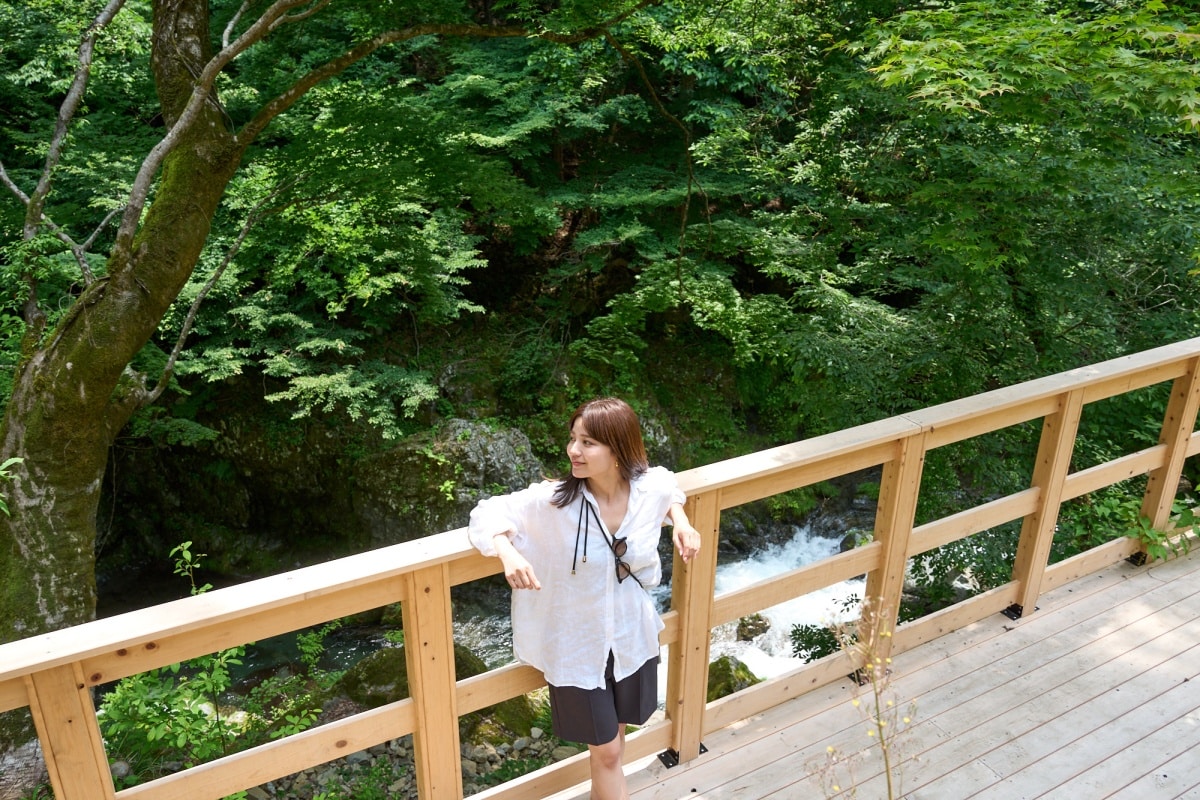
A wood deck overlooks the Minami Akigawa, also built with Hinohara timber.
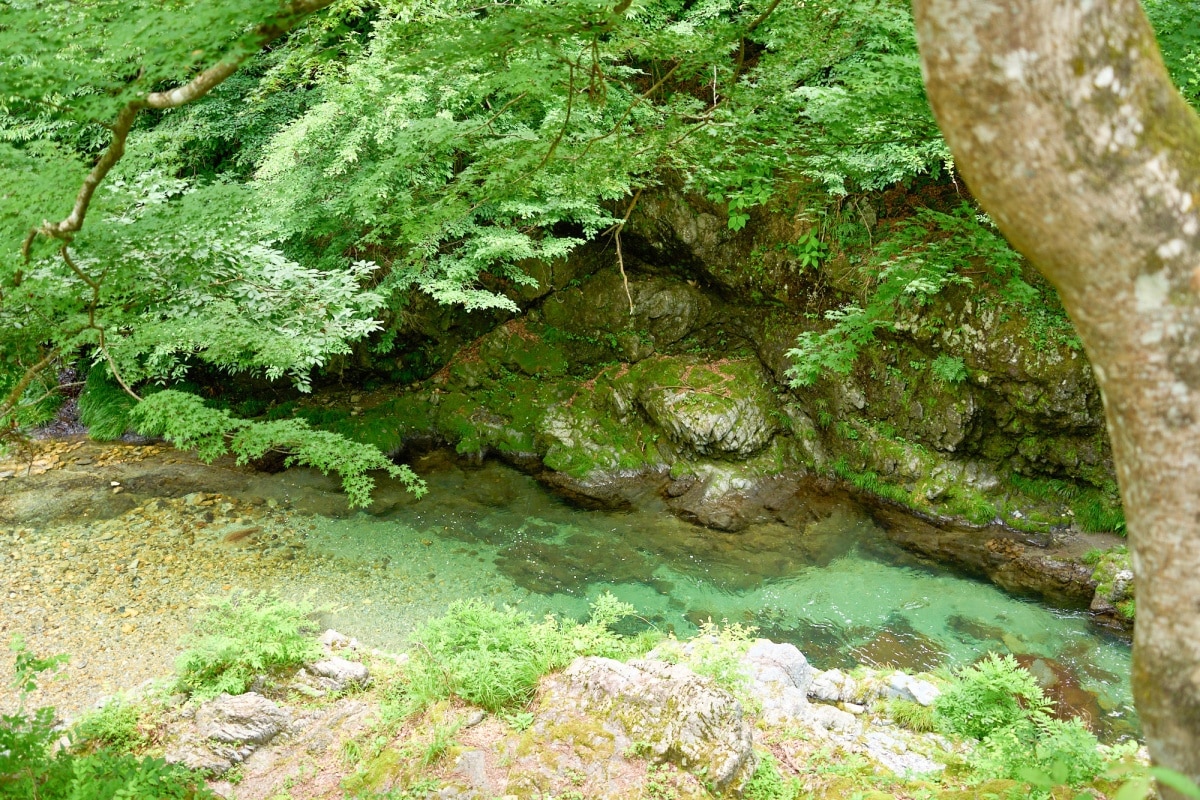
Moss-covered rock and clear water—untouched nature still breathes along the Minami Akigawa.

Nature’s Wisdom Gained by Feeding the Fire
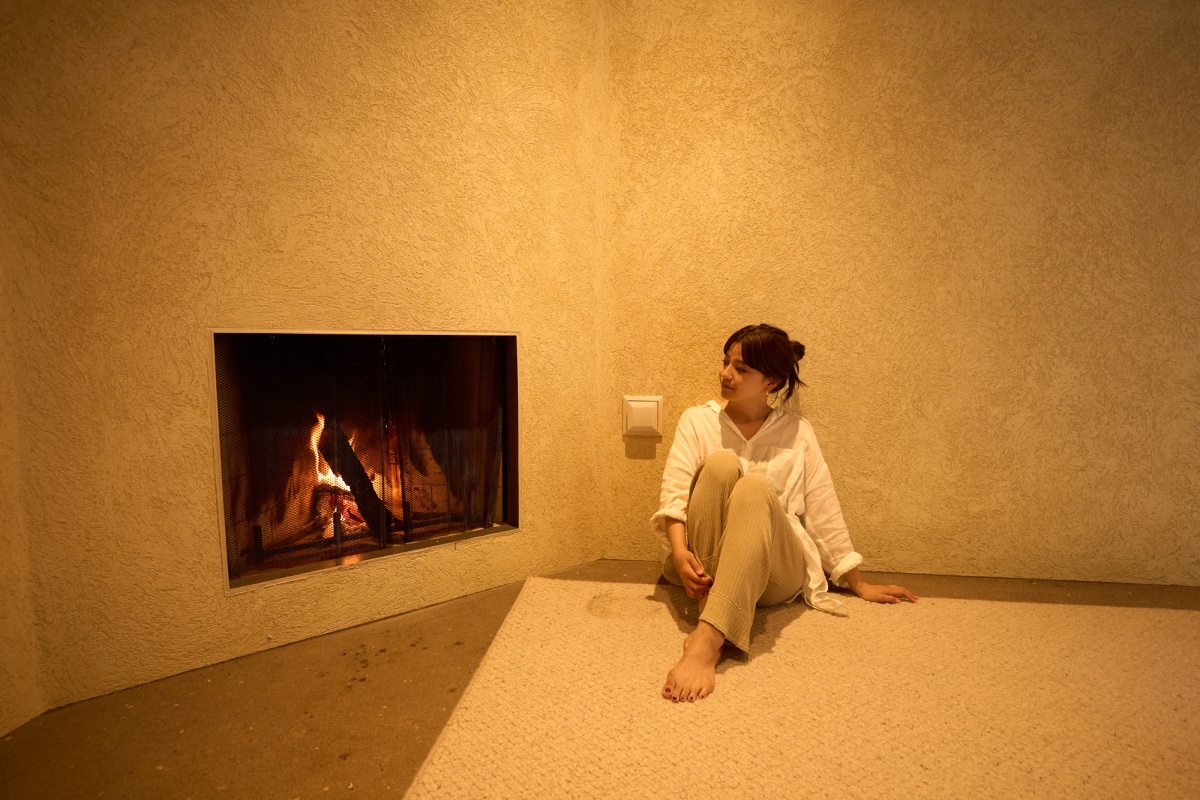
An indoor hearth at HINOKO SHELTER—time spent quietly with flame is part of the appeal here.
The shelter’s signature is the access to three fire-based experiences: a campfire, a wood-burning sauna, and a hearth. Seasoned firewood is stocked on site, so you can choose when and how long to spend with the flames.
“If the wood is damp or pieces are too thick, the fire won’t take,” says Masuda. “The trial-and-error of lighting a fire contains nature’s wisdom. That’s what we call it—and we hope guests can feel that learning through the campfire.”
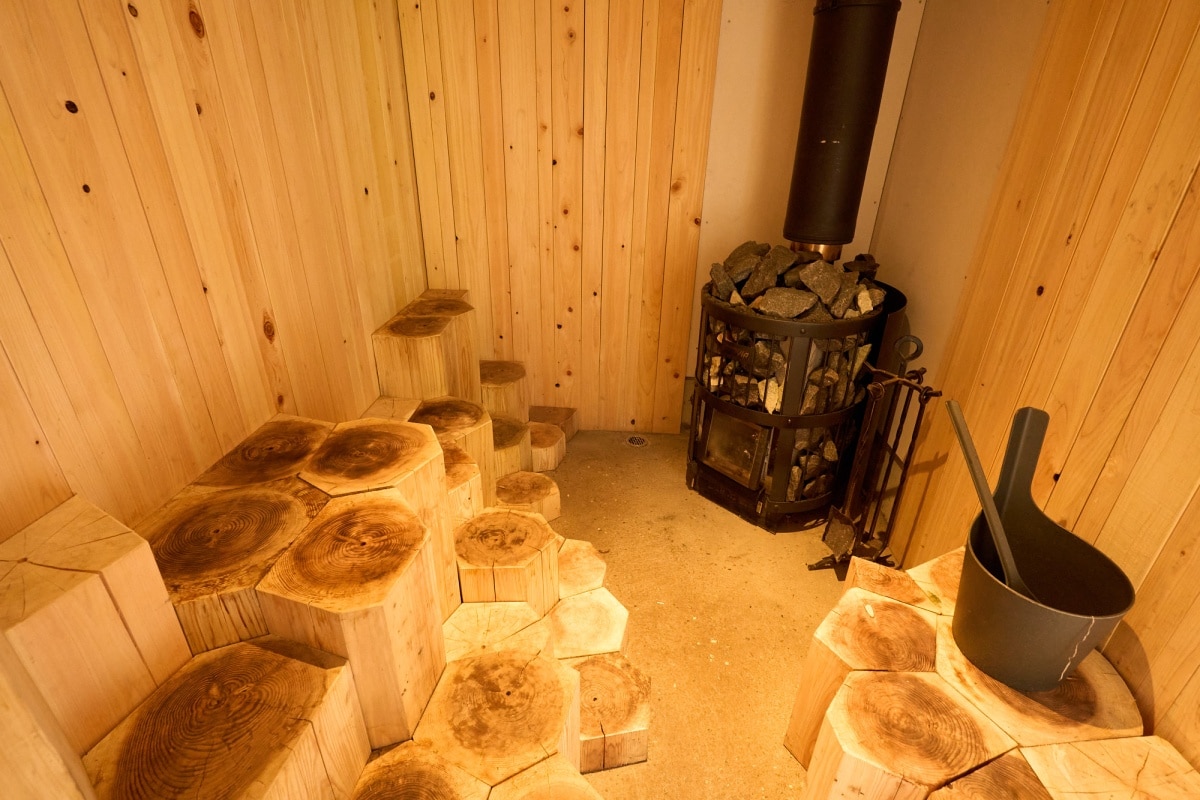
The KITONE site’s sauna room carries a soothing scent of wood. You feed the stove yourself to control the heat.
The wood-stove sauna is especially popular with members. Each site has a distinct interior: Kitone’s design takes inspiration from tree roots; visually delightful benches are hexagonal, made from logs felled for construction. Iwasuna’s sauna is finished with plaster mixed with Hinohara soil, creating a modern, rocky feel. With different atmospheres at each site, every visit offers a new experience.
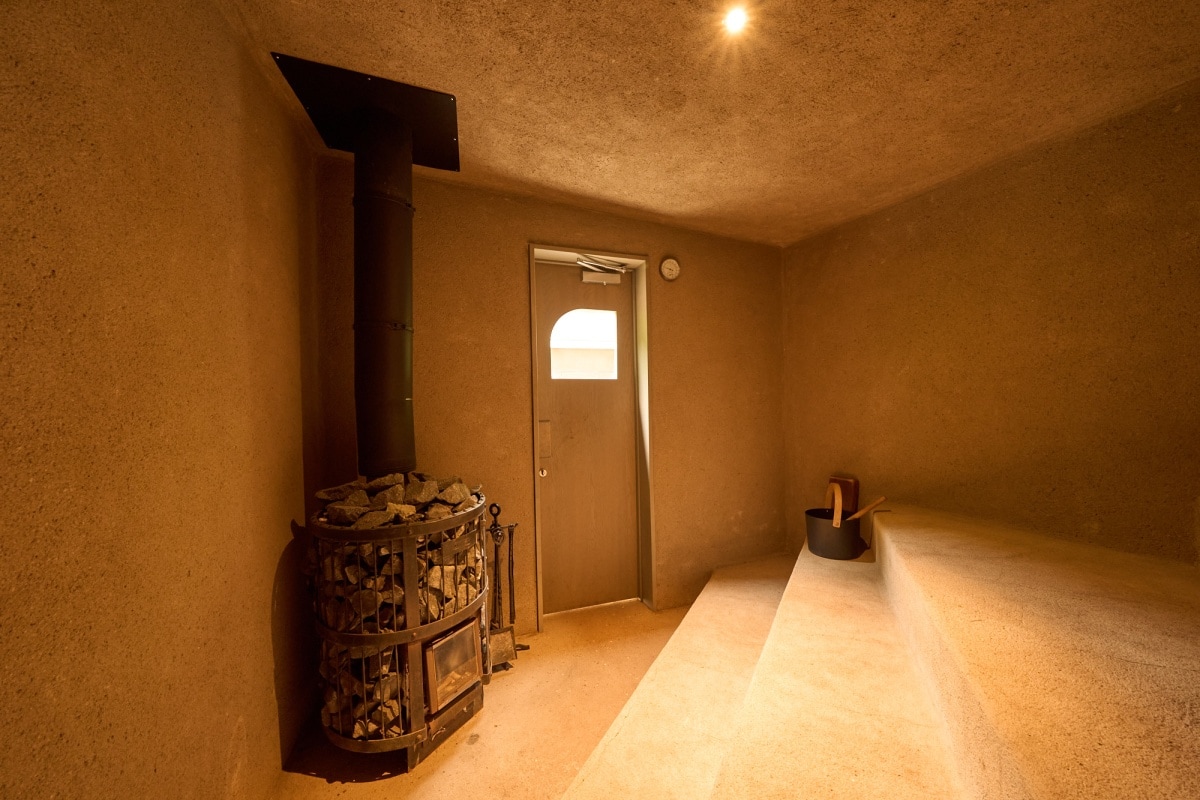
The IWASUNA sauna includes a space where you can lie down.
“Sure, fire starters make it easy—but we encourage guests to split their own wood and build the fire,” Masuda says. “That process is where the value lies. Talking around the flames or sitting with them in silence becomes a special experience you can’t replace.”
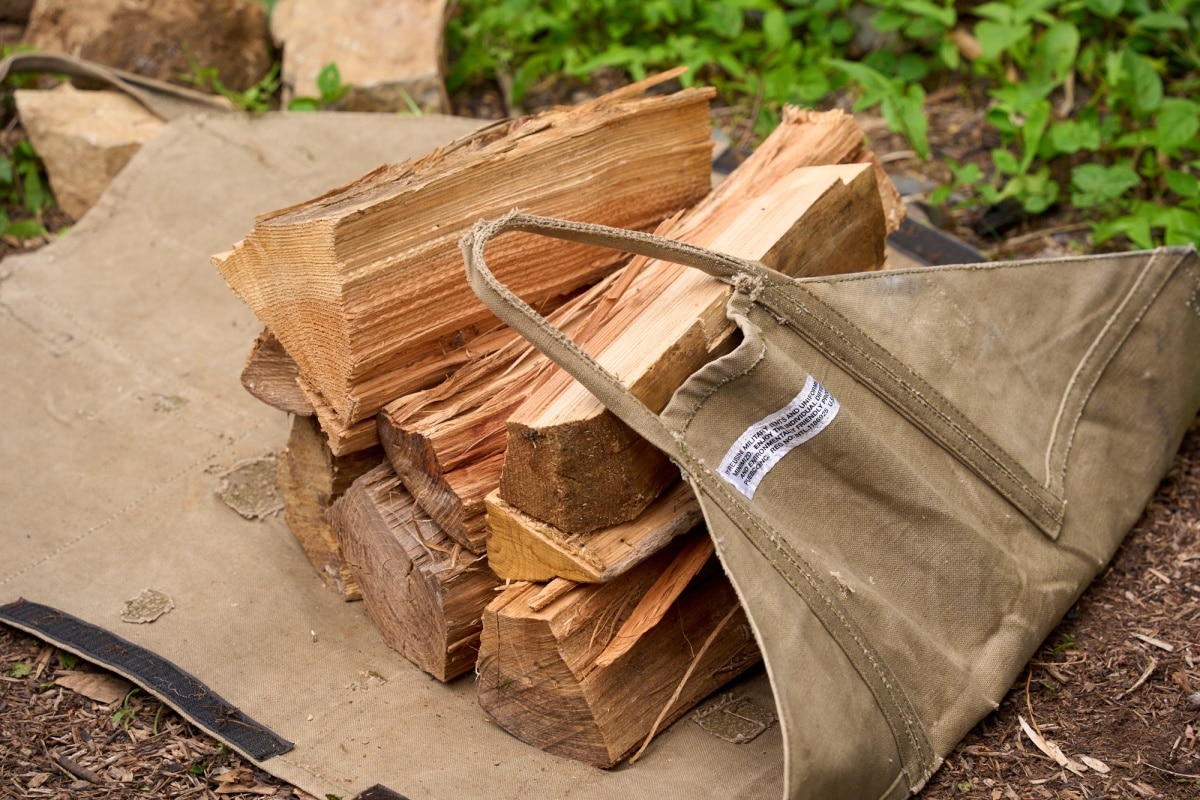
Firewood is stocked at the dedicated parking area along the road. Fill a carry bag with what you need and bring it to your site.

Time for Comfort and Creation in the Company of the Forest
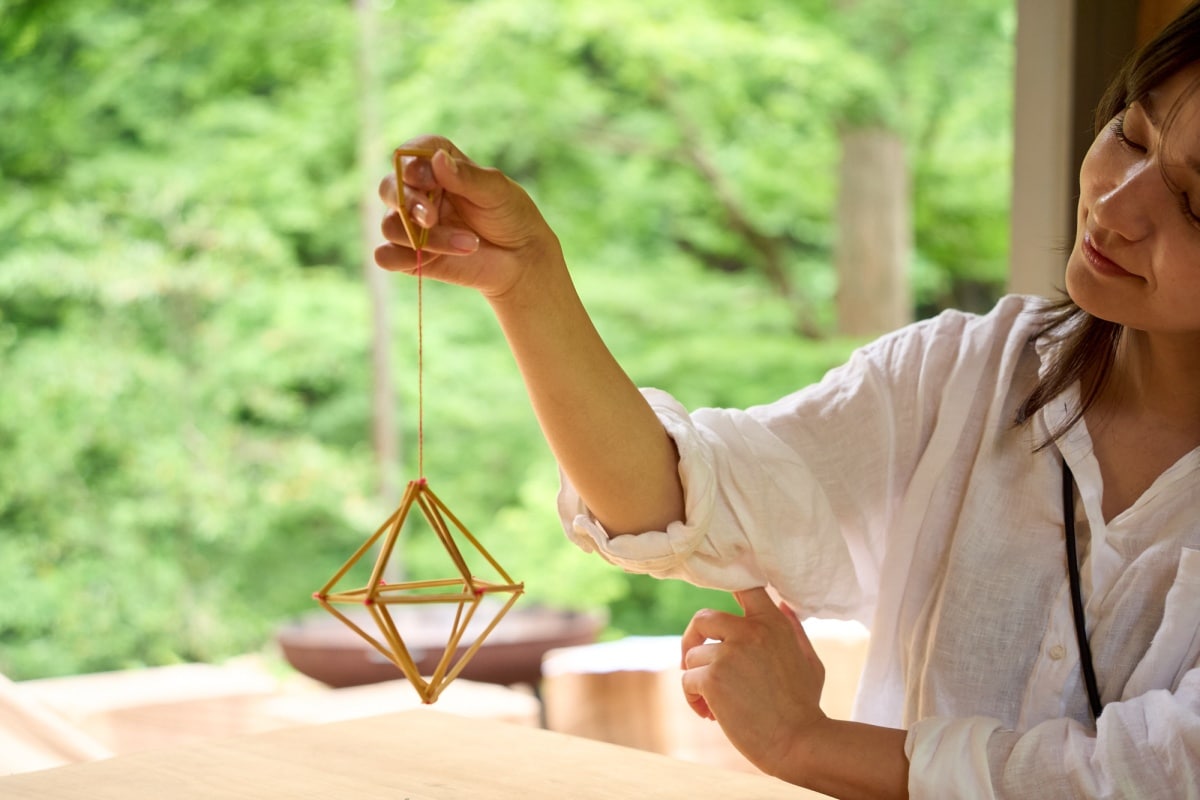
In a forest-wrapped space, guests can lose themselves in making himmeli.
Beyond dynamic experiences like campfires and saunas, HINOKO SHELTER also values quieter, creative time with nature. One example is making himmeli, Finland’s traditional straw mobiles.
Himmeli are geometric mobiles made by threading together straw or tubing. “There’s a producer here in Hinohara who makes wheat-straw tubes, and through that connection we partnered with a himmeli artist to develop an original kit,” says Masuda. “Assembly is trickier than it looks; even adults will focus for an hour. Visitors can enjoy making them while listening to the surrounding natural sounds,” says Masuda.
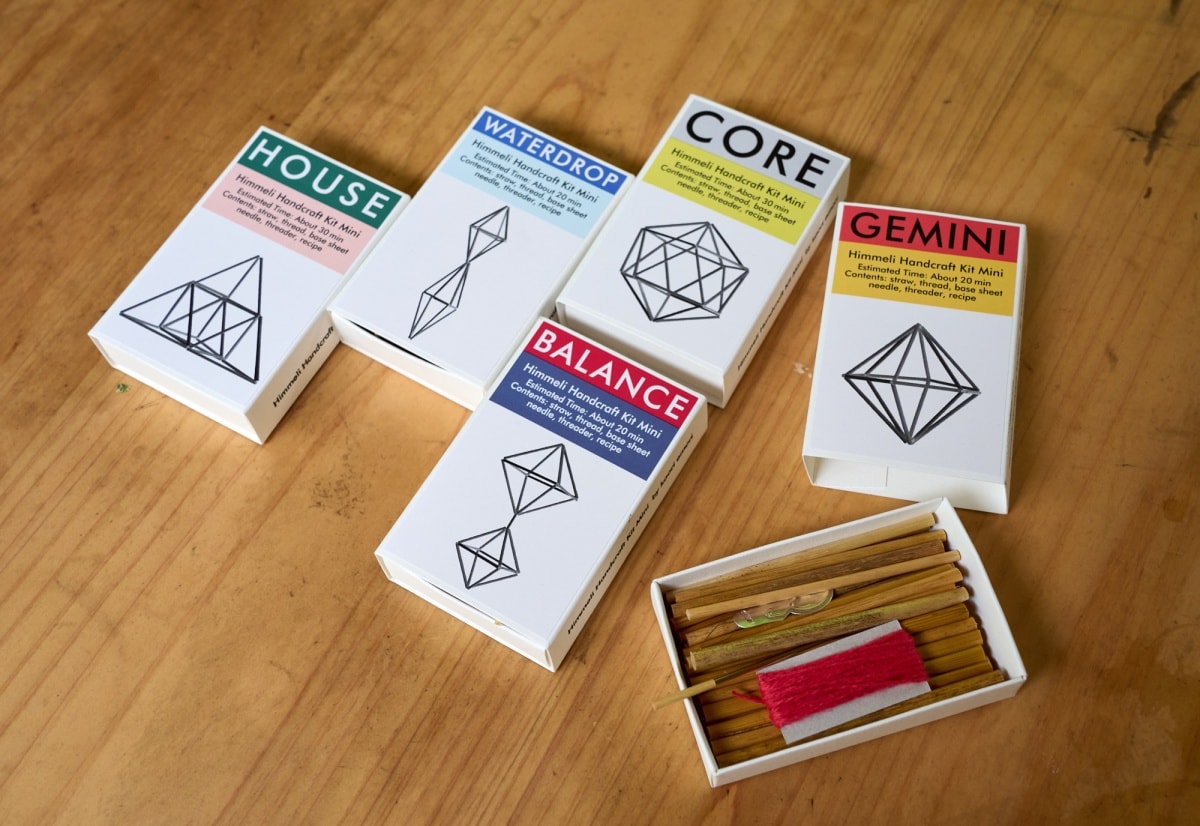
Himmeli kits are stocked in the cabin and can be purchased via online payment.
Stays are available for up to 22 hours (check-in 12:00 / check-out 10:00). The experience is largely self-service: bring your own food and drinks, while tableware, cutlery, and essential cookware are provided. Spend your time however you like—enjoy outdoor cooking, relax with a book, or simply soak in the forest surroundings.
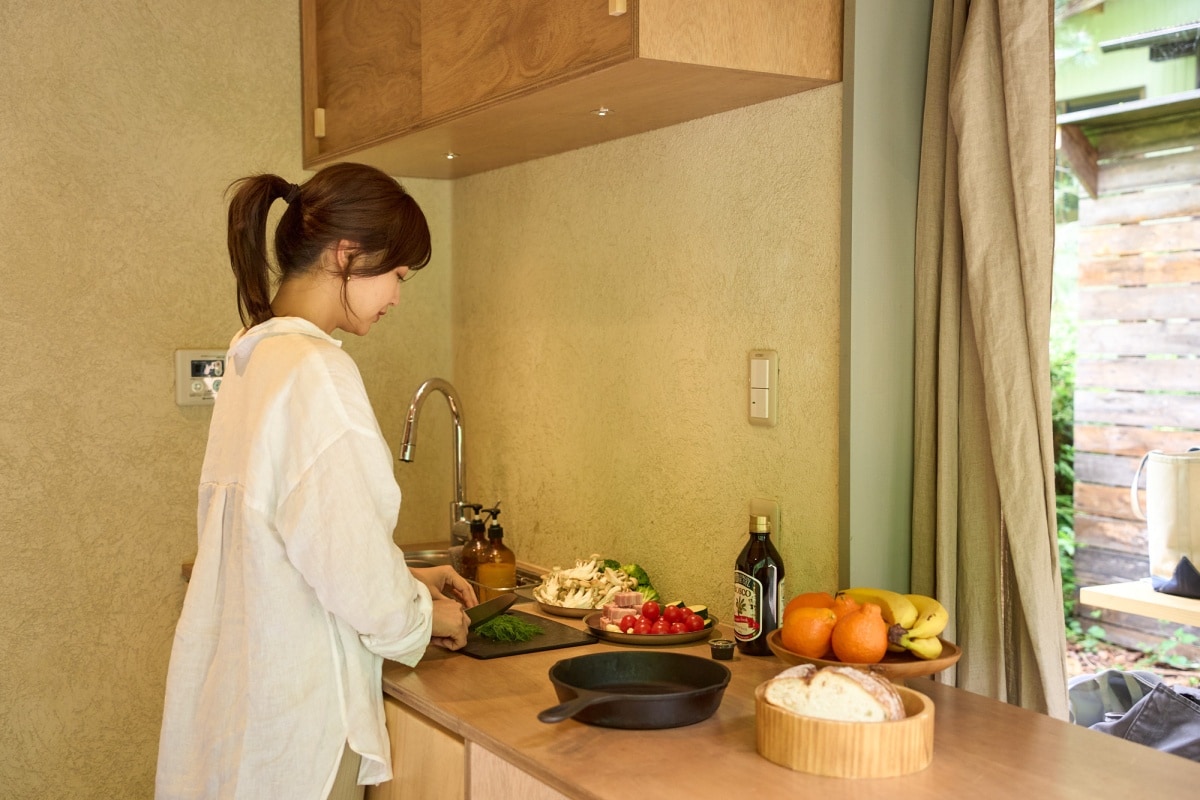
A sink and prep counter are built into the cabin—spacious enough for two to cook together.
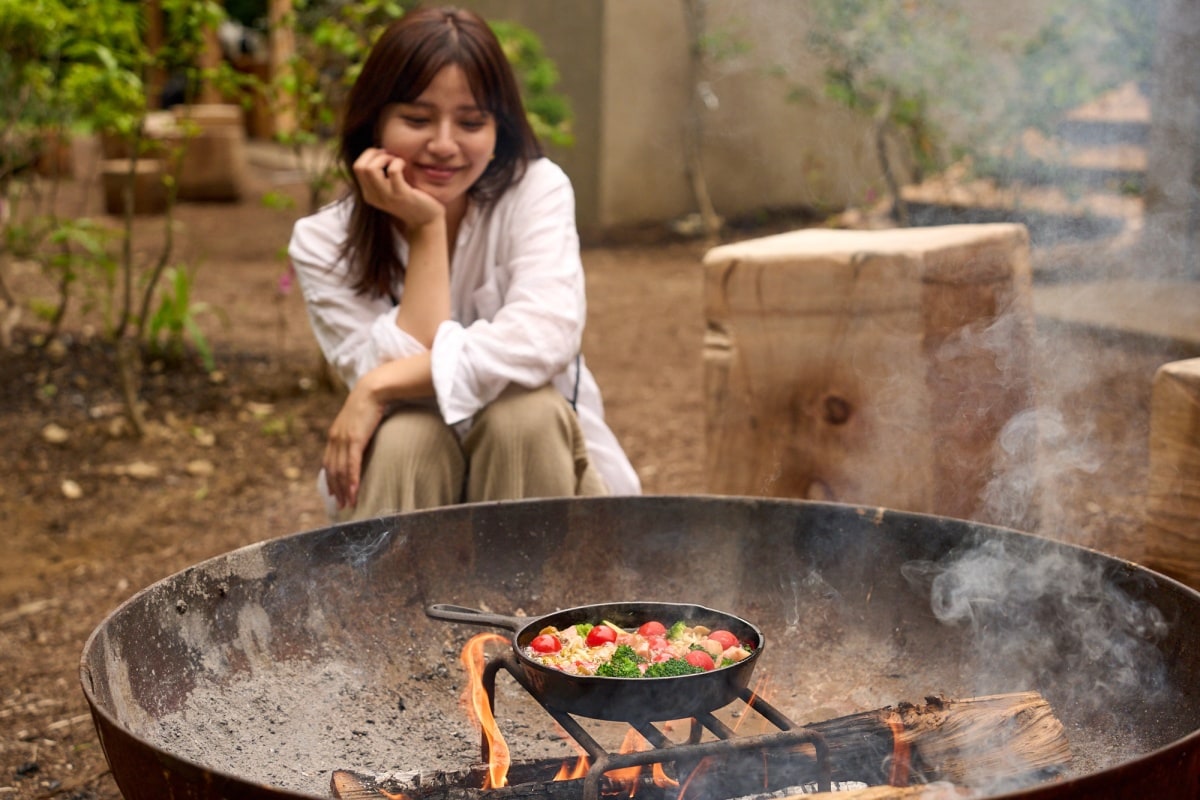
Try campfire cooking at the fire pit; a tabletop gas stove inside also lets you cook in the dining area.
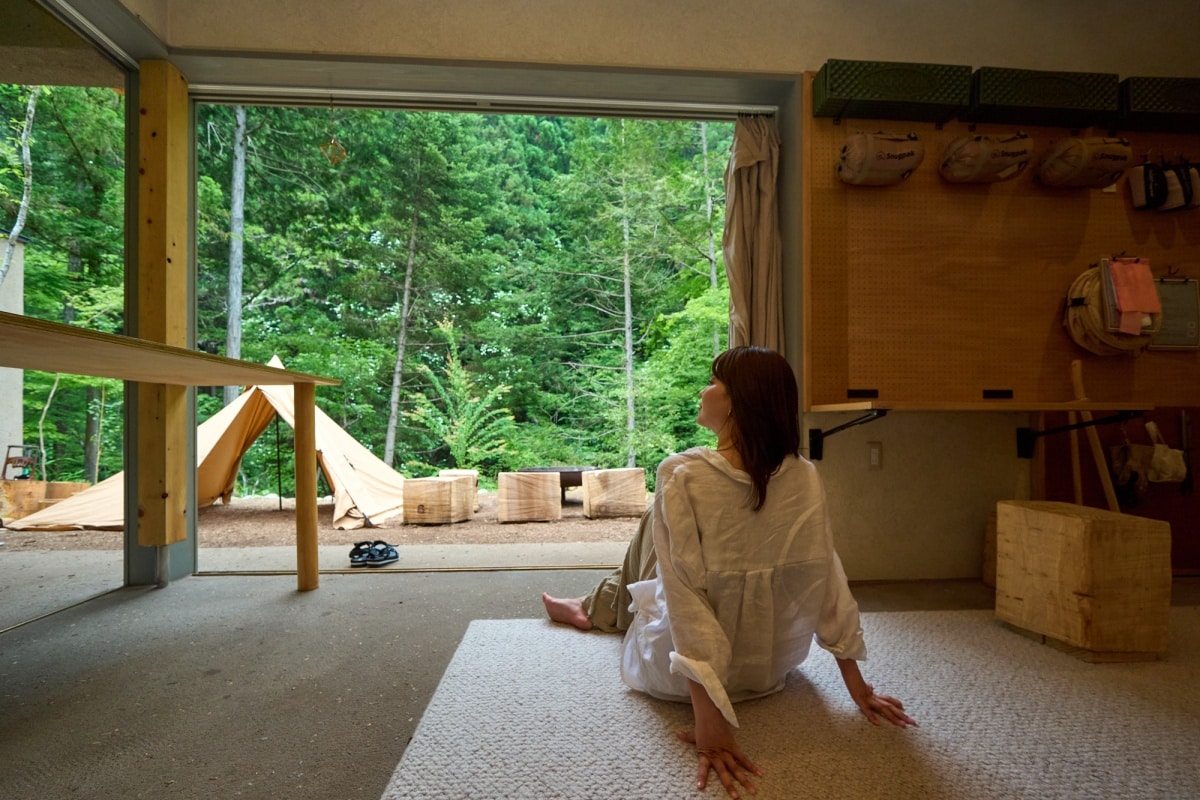
From the level, contiguous floor plan, the nature outside feels almost like it’s indoors.
Most members live in central Tokyo. “Perhaps because access is easy, overnights and day-use are about half and half,” says Masuda. “Some visit on weekdays just for the sauna; others pitch their own tent in the open space for a mini-camp. We also see two families renting an entire site for themselves.”

A New Relationship with Fire and Nature Starts Here
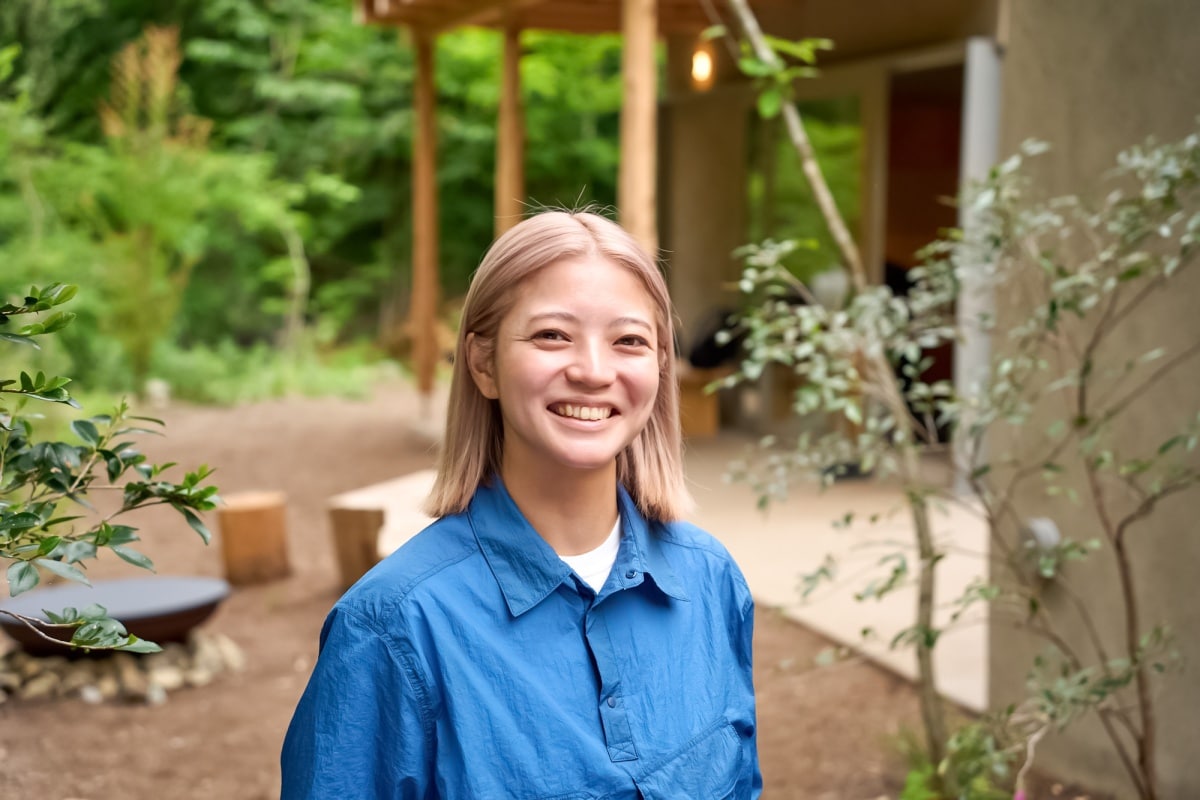
HINOKO Director Momoko Masuda of Trailheads. “We have staff who can assist in English, so overseas guests are welcome to contact us.”
The company plans to collaborate with nearby facilities and operators to offer various programs. Ideas include tours of a local distillery that makes aroma oils and inner-tube river runs—activities that make the most of the area’s nature. “There are also attractive add-ons for sightseeing in Hinohara after your stay,” says Masuda.
Looking ahead, Hinoko Shelter’s will continue proposing a new relationship between nature and fire.
“Hinohara’s appeal is the extent of untouched nature you wouldn’t expect in Tokyo,” Masuda says. HINOKO SHELTER isn’t as pampering as glamping, nor as spartan as a mountain hut. It sits in between—a place to enjoy the fun of figuring things out for yourself. We hope time spent here lets visitors touch nature’s wisdom and nurtures a sense of inner richness.”
Feeding logs into a flame: within that simple act is a dialogue with nature. For those seeking such moments, Hinoko Shelter is a quiet place where a fire is kept for you.
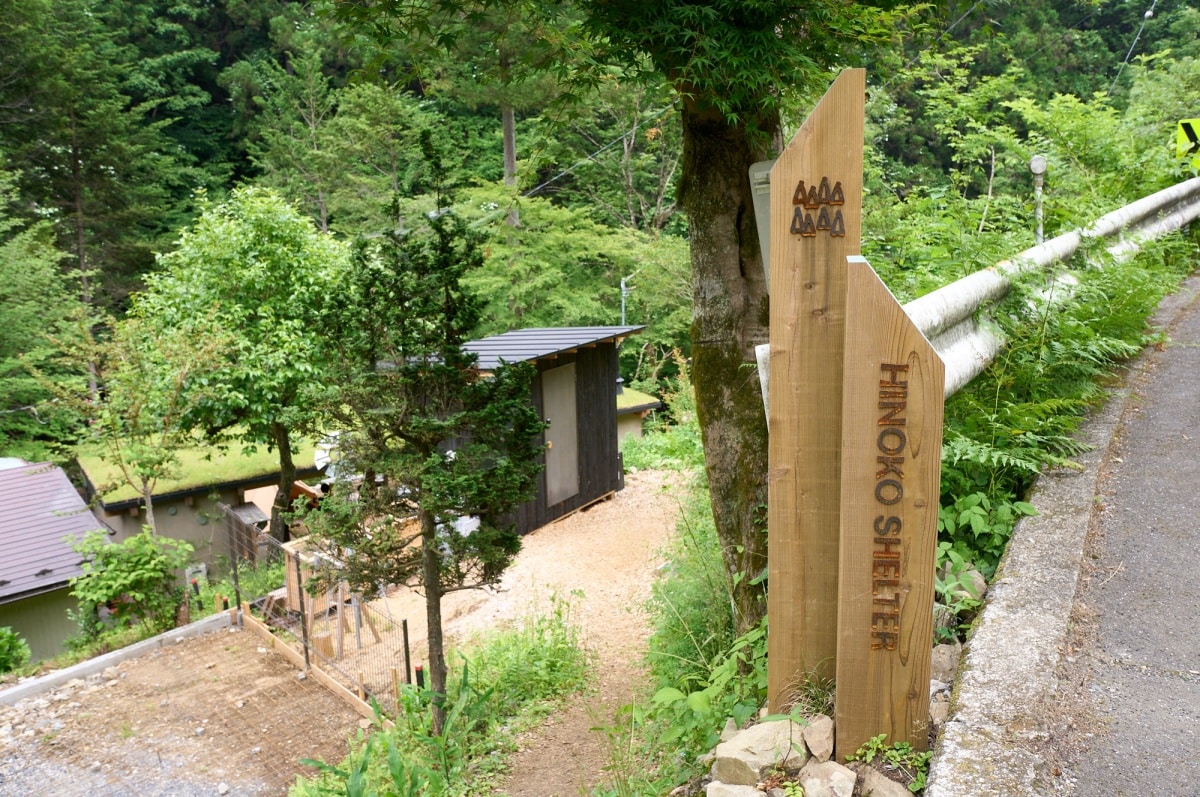
Look for the wooden sign along the metropolitan road; a narrow slope leads down into the private grounds.
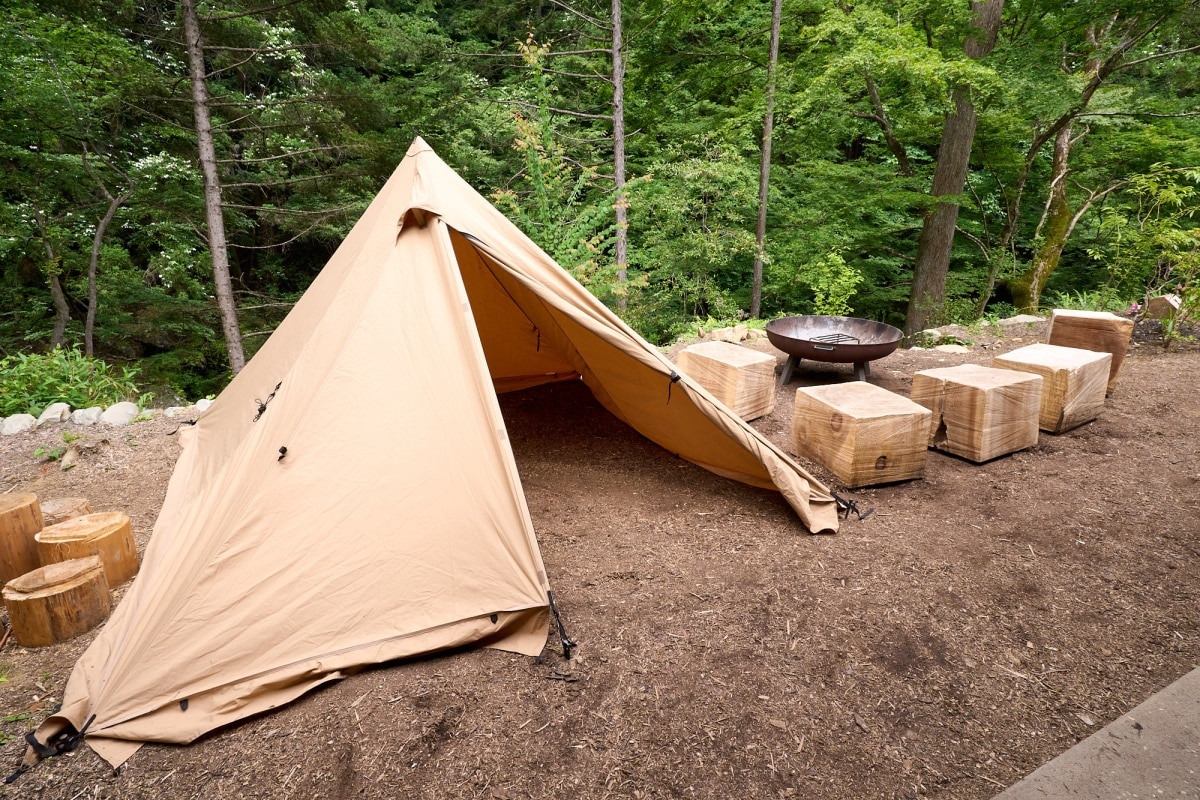
Each site’s open space also has room to pitch your own tent if you’d like to bring one.

HINOKO SHELTER
Address:5647 Hinohara, Nishitama-gun, Tokyo [MAP]
Hours: Overnight 12:00–10:00 (next day); Day-use 12:00–21:00
Rates: Weekdays — Overnight ¥45,000 / Day-use ¥35,000
Weekends & Holidays — Overnight ¥60,000 / Day-use ¥50,000
High season: +20% across the board
Capacity: 8 people per site (3 inside the cabin + additional tent space)
Eligibility: Members only (annual fee ¥13,000)
Reservations: Bookable from 90 days in advance after membership registration via the reservation site
URL: http://hinoko.jp
SNS:Instagram https://www.instagram.com/hinoko.jp/

※This project was carried out with support from the Tokyo Convention & Visitors Bureau (TCVB) Adventure Tourism Promotion Grant.
Text: Tadayuki Matsuita Photos: Tatsushi Yuasa


